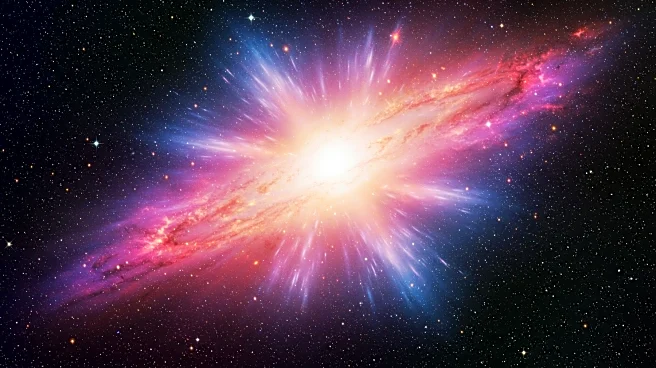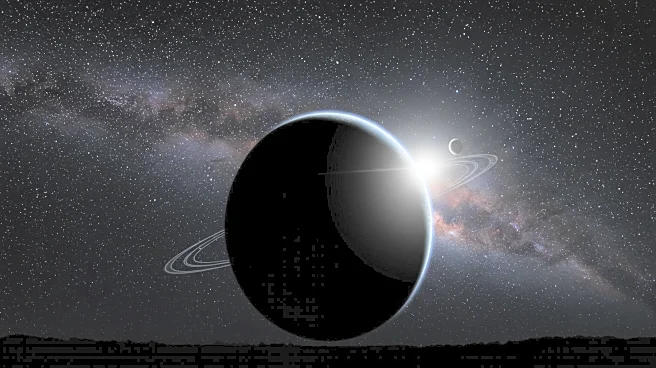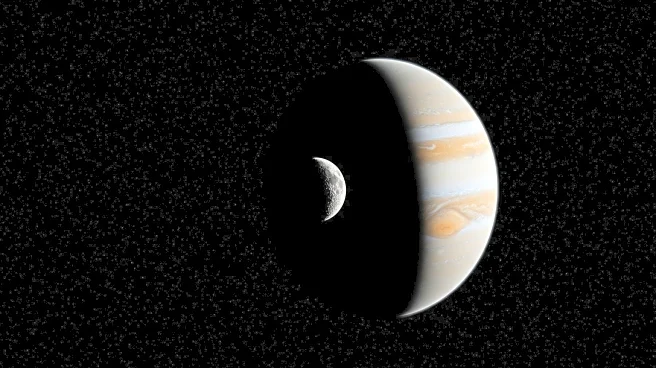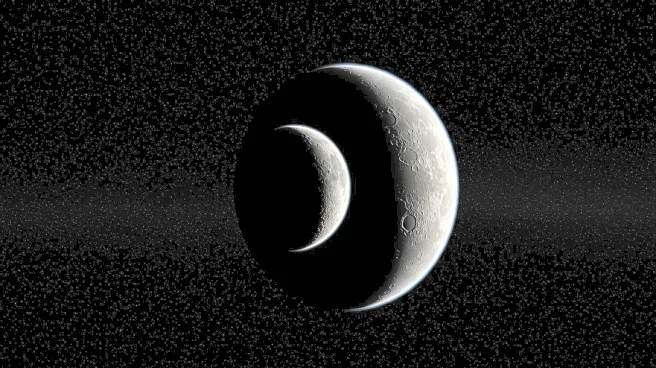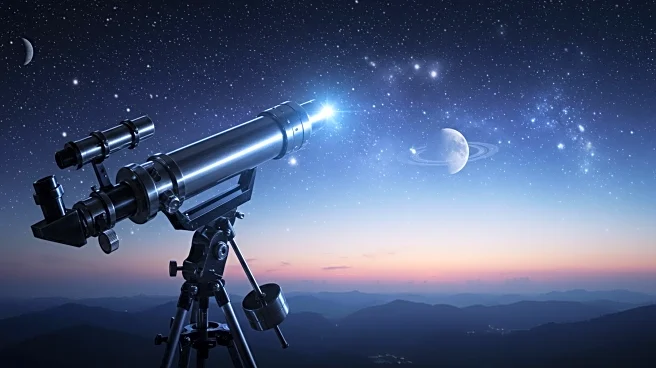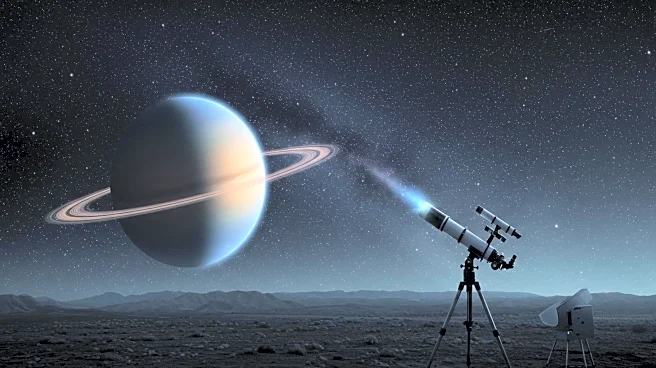Rapid Read • 7 min read
The James Webb Space Telescope (JWST) has successfully traced the origin of an exceptionally bright radio signal, known as FRB 20250316A or 'RBFLOAT', to a galaxy 130 million light-years away. This achievement marks a significant milestone in the study of fast radio bursts (FRBs), which are brief but powerful emissions of radio energy. The JWST's infrared capabilities allowed researchers to pinpoint the burst's source to a specific region within the galaxy NGC 4141, providing unprecedented clarity on the stellar environment surrounding the burst. The findings, published in The Astrophysical Journal Letters, suggest that the burst may have originated from a large, old star or a magnetar, a type of neutron star with a strong magnetic field.
AD
This discovery is crucial for advancing the understanding of fast radio bursts, a phenomenon that has puzzled scientists since its discovery in 2007. By identifying the precise location and potential progenitors of these bursts, researchers can better understand the conditions that lead to such powerful emissions. The ability to trace FRBs to their origins could also provide insights into stellar dynamics and the lifecycle of stars, particularly those that end as magnetars. This research not only enhances the scientific community's knowledge of cosmic phenomena but also demonstrates the capabilities of the JWST in exploring the universe's mysteries.
Future research will likely focus on further analyzing the environment around the identified FRB source to confirm the presence of a magnetar or other potential progenitors. The continued use of the JWST, alongside other telescopes like the Canadian Hydrogen Intensity Mapping Experiment (CHIME), will be instrumental in tracking more FRBs and understanding their origins. This could lead to breakthroughs in astrophysics, particularly in the study of neutron stars and the mechanisms behind fast radio bursts.
AD
More Stories You Might Enjoy
